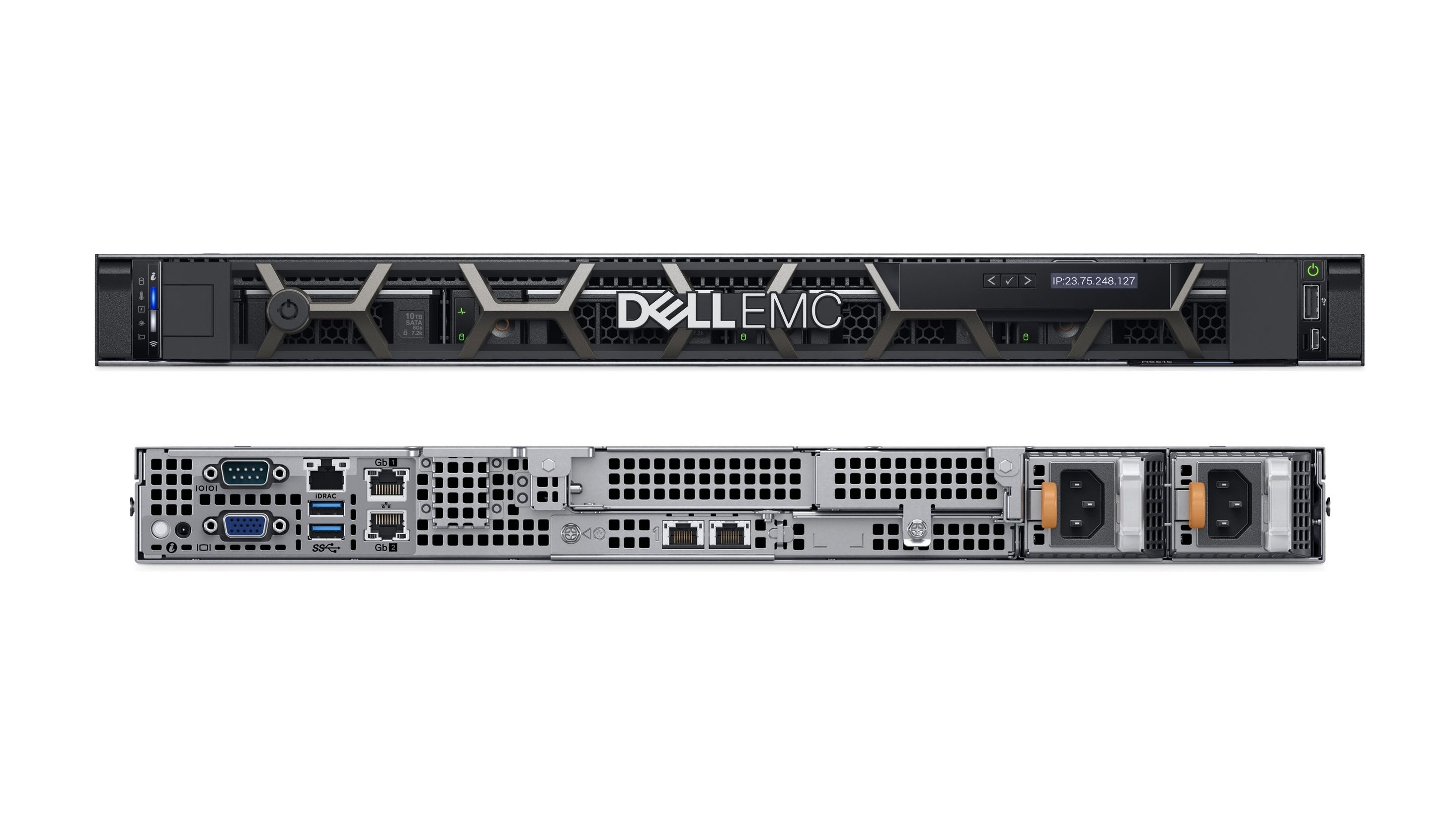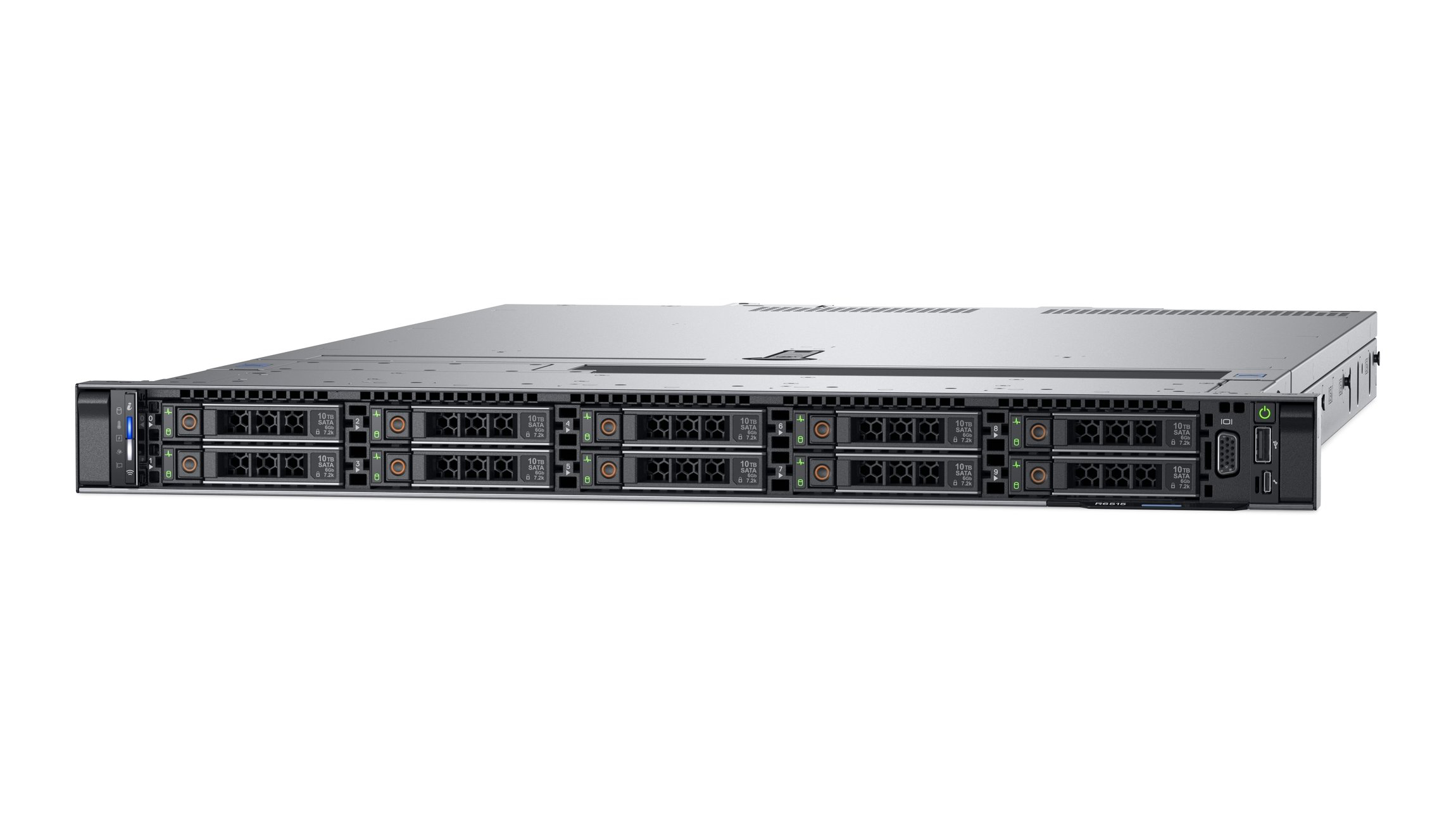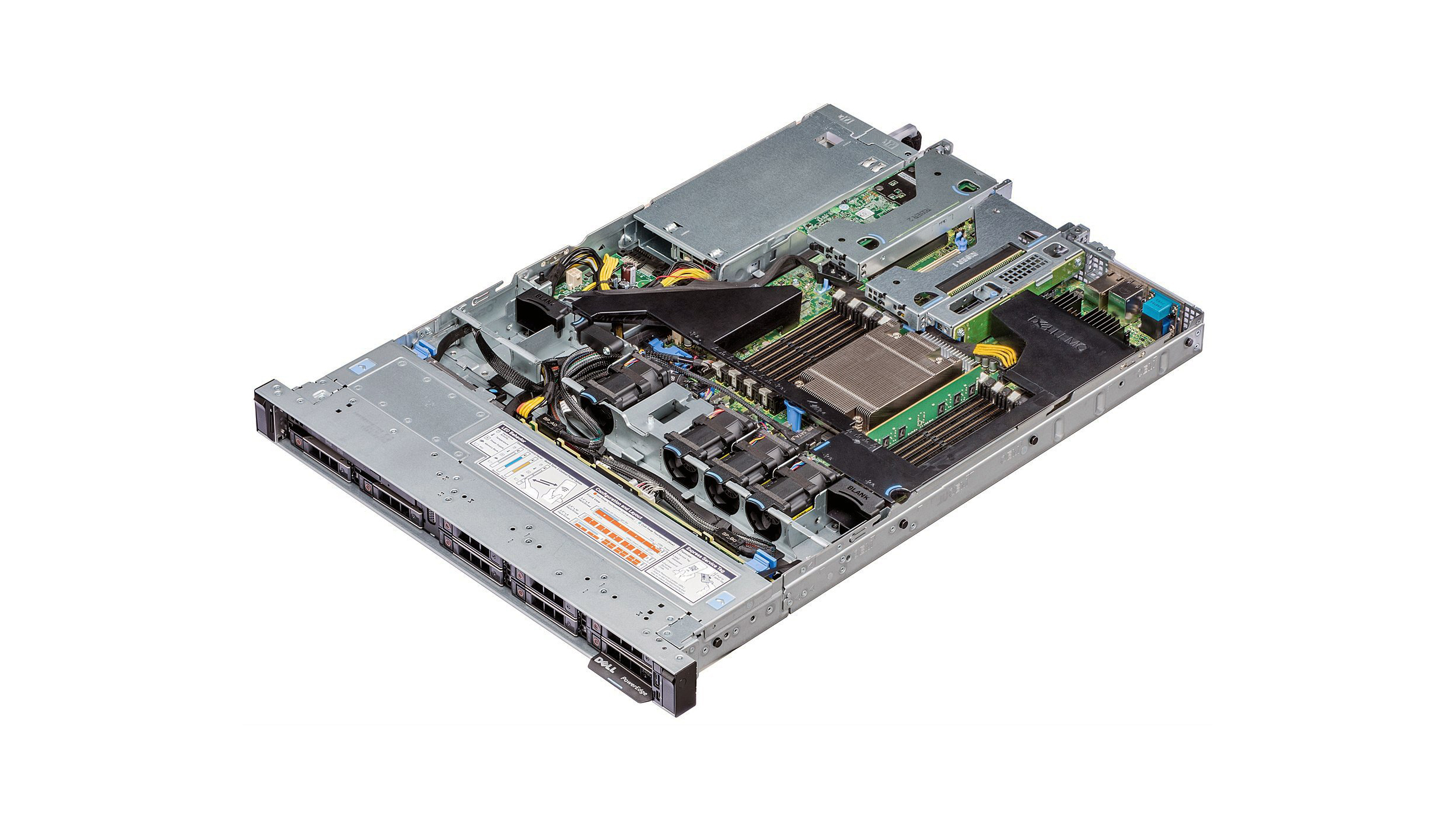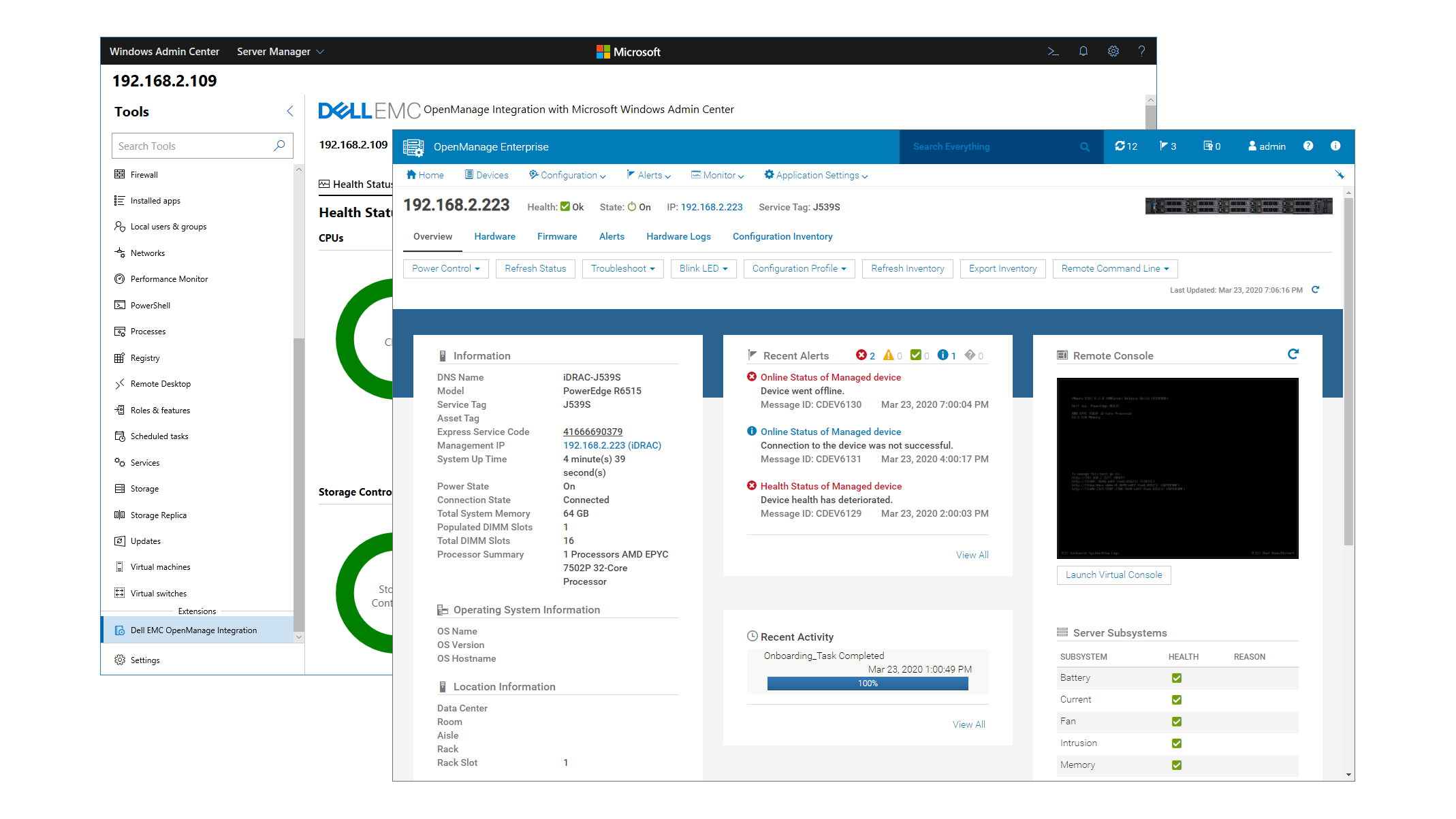Dell PowerEdge R6515 review: Core competence, epic value
A compact, core-heavy EPYC 7002 rack server packed with great features


-
+
Excellent value
-
+
Stunning core density
-
+
High memory capacity
-
+
Great storage options
-
+
Classy remote management
-
-
No system performance graphs in the iDRAC9 console

Targeting diverse enterprise workloads such as virtualisation, HCI, big databases and VDI, Dell’s PowerEdge R6515 delivers a monumental core density in the slimmest of rack server packages. Powered by AMD’s Gen2 EPYC 7002 CPUs, our review system was supplied with a 32-core EPYC 7502P but the server is also available with a big choice of other models including four of AMD’s mighty 64-core chips.
The new EPYCs allow the R6515 to deliver a 100% increase in core density over the first generation R6415. The top memory capacity of 2TB and 8 integral channels remain the same, but the EPYC 7002 CPUs boost memory speed from 2,666MHz to 3,200MHz and deliver support for PCI-E 4.0.
The bottom line is the R6515 delivers the processing power and I/O capacity of a 2P server but in a more compact and rack-friendly 1P package. This isn’t to the detriment of other features though, as its nifty internal design allows the server to offer impressive storage credentials and expansion potential.
Dell PowerEdge R6515 review: Design and build quality
Lifting the lid reveals a busy but well-designed interior affording easy access for maintenance maneuvers. The layout is pretty much the same as the R6415 with the EPYC CPU sitting centrally on the motherboard, mounted by a solid passive heatsink and flanked on each side by 8 DIMM slots.
The 7502P CPU in our system has a base speed of 2.5GHz and a top boost frequency of 3.35GHz. It delivers 32 physical and 64 logical cores and sports a meaty 128MB L3 cache.

The EPYC’s on-chip memory controllers mean you don’t need a second CPU to realise the top 2TB capacity - but there is one caveat. RDIMMs support 3,200MHz memory speeds but are only available in sizes up to 64GB whereas LR-DIMMs go up to 128GB sizes but drop speed to 2,666MHz.
Dell PowerEdge R6515 review: Storage permutations
The R6515 offers plenty of storage options with a choice of three backplanes. Base systems have a 4 LFF hot-swap backplane or you can opt for an 8 SFF version if you want to keep the optical drive.
Dell dispensed with the optical drive for our review system, which was supplied with the full 10 SFF bay backplane. A notable feature is it has eight universal bays that support SATA, SAS3 and NVMe devices and two for NVMe SSDs only.
No PCI-E adapter cards are required for NVMe support as the backplane ports are cabled directly to the PCI-E sockets at the front of the motherboard. If you want to mix SATA/SAS3 and NVMe devices, you’ll need to specify a controller card as the motherboard doesn’t have embedded RAID.
RAID choices start with the entry-level PERC H330 Mini card which snaps into the dedicated slot at the rear of the motherboard and supports SATA/SAS3 drives plus stripes, mirrors and RAID5 arrays. Our system sports the top-dog PERC H740P Mini card, which adds RAID6 to the mix and includes 8GB of NVRAM cache plus a battery backup unit.

Dell PowerEdge R6515 review: Power and expansion
Power choices are simplified as the R6515 is only available with dual 550W hot-plug PSUs. Cooling is handled by six fans of the cold-swap variety, arranged behind the drive backplane.
The R6515 can present two PCI-E expansion slots using optional riser cards. These convert the slot nearest the PSU bay to a PCI-E 3.0 version while the one next door employs a larger motherboard connector to provide PCI-E 4.0 services.
The R6515 comes with dual embedded Gigabit ports and you don’t need to lose an expansion slot to expand, as underneath the PCI-E 4.0 riser is a LOM (LAN on motherboard) port. Dell offers a good range of LOM mezzanine cards, and you can choose from dual Gigabit, 10GbE copper or fibre and 25GbE.
Other storage features of note are Dell’s IDSDM (internal dual SD module) which fits into a dedicated slot on the motherboard and provides redundant storage for running a hypervisor. We’ve also included the BOSS (boot optimized storage solution) M.2 SSD card which uses a PCI-E slot and provides mirrored storage using dual M.2 SSDs so you can run an OS without using any front drive bays.
Dell PowerEdge R6515 review: Server management
Remote server management is a class act; the embedded iDRAC9 controller presents a smart web interface offering a vast amount of information on system and component status, power usage and cooling efficiency. Along with full hardware inventory, it provides direct access to BIOS as well as storage configuration, and the Enterprise X5 license activates a remote console and virtual media services.

The new Datacenter X5 license adds telemetry streaming of over 20 hardware metrics for analytics plus thermal and airflow management and tighter access security with automatic certificate enrolment. The only feature you won’t find for any of Dell’s EPYC servers is the System page performance tab, which is still unable to support AMD’s architecture.
The Quick Sync 2 module is a must-have feature for data centre technicians. Using the OpenManage Mobile (OMM) iOS app on our iPad, we connected to it over Bluetooth by scanning the QR code on the pull-out system label and could then view all server information, alerts and health status.
The OpenManage Enterprise (OME) software provides general systems management of all Dell equipment. We run it in the lab as a Hyper-V VM and after discovering the server’s iDRAC9, we were able to manage and monitor it, directly access the controller’s web console and run remote control sessions. We also used the new OME extension for the Windows Admin Center to view health information and hardware inventory.
Dell PowerEdge R6515 review: Verdict
The PowerEdge R6515 is perfect for enterprises that want the highest core density in the smallest rack footprint. It may only be 1U high but the R6515 delivers great expansion potential, a wide range of storage options plus the best remote management tools - and all at a temptingly low price.
Dell PowerEdge R6515 specifications
| Chassis | 1U rack |
| CPU | 32-core 2.5GHz AMD EPYC 7502P |
| Memory | 64GB 3,200MHz DDR4 ECC (max 2TB with LR-DIMM) |
| Storage bays | 10 x SFF hot-swap |
| RAID | Dell PERC H740P Mini/8GB NVRAM cache/BBU |
| Storage included | 2 x 480GB SATA Read Intensive SSDs |
| Other Storage | Dell BOSS with 2 x 240GB M.2 SSDs |
| Network | 2 x Gigabit, LOM port |
| Expansion | PCI-e 3.0 and PCI-e 4.0 slots (with optional risers) |
| Power | 2 x 550W hot-plug PSUs |
| Management | Dell iDRAC9 Enterprise X5, Quick Sync 2 module |
| Warranty | 3Yr ProSupport On-Site NBD |
Get the ITPro daily newsletter
Sign up today and you will receive a free copy of our Future Focus 2025 report - the leading guidance on AI, cybersecurity and other IT challenges as per 700+ senior executives
Dave is an IT consultant and freelance journalist specialising in hands-on reviews of computer networking products covering all market sectors from small businesses to enterprises. Founder of Binary Testing Ltd – the UK’s premier independent network testing laboratory - Dave has over 45 years of experience in the IT industry.
Dave has produced many thousands of in-depth business networking product reviews from his lab which have been reproduced globally. Writing for ITPro and its sister title, PC Pro, he covers all areas of business IT infrastructure, including servers, storage, network security, data protection, cloud, infrastructure and services.
-
 ‘Phishing kits are a force multiplier': Cheap cyber crime kits can be bought on the dark web for less than $25 – and experts warn it’s lowering the barrier of entry for amateur hackers
‘Phishing kits are a force multiplier': Cheap cyber crime kits can be bought on the dark web for less than $25 – and experts warn it’s lowering the barrier of entry for amateur hackersNews Research from NordVPN shows phishing kits are now widely available on the dark web and via messaging apps like Telegram, and are often selling for less than $25.
By Emma Woollacott Published
-
 Redis unveils new tools for developers working on AI applications
Redis unveils new tools for developers working on AI applicationsNews Redis has announced new tools aimed at making it easier for AI developers to build applications and optimize large language model (LLM) outputs.
By Ross Kelly Published
-
 Google layoffs continue with "hundreds" cut from Chrome, Android, and Pixel teams
Google layoffs continue with "hundreds" cut from Chrome, Android, and Pixel teamsNews The tech giant's efficiency drive enters a third year with devices teams the latest target
By Bobby Hellard Published